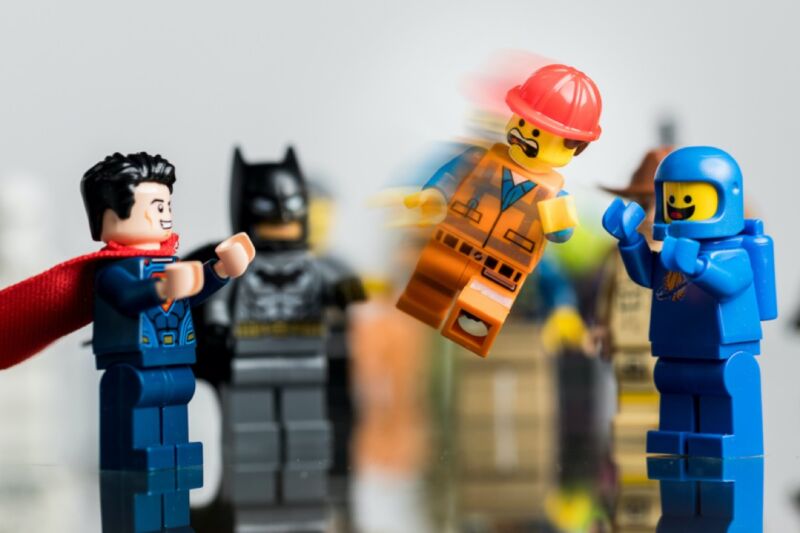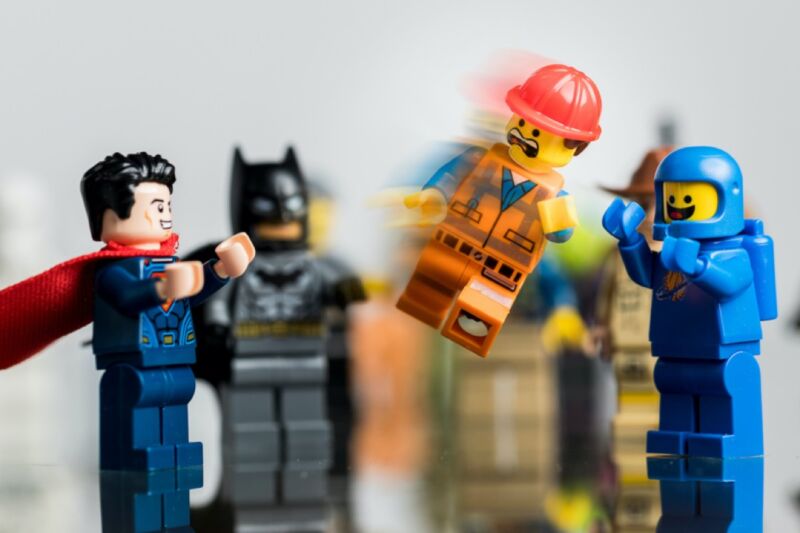
Enlarge / Brian Anderson’s experiments with Lego minifigs led to the development of an interactive museum exhibit in Switzerland. (credit: Brian Anderson)
Legos are a beloved staple of educational science activities and have even proved useful in particle physics experiments at CERN to explore the properties of hadrons. For Brian Anderson, a physicist at Brigham Young University, Legos are an essential component of his acoustics research. At a meeting of the Acoustical Society of America in Seattle earlier this month, Anderson described how he figured out how to focus sound-wave energy precisely enough to knock over a single Lego minifig without disturbing other minifigs clustered around it.
The key is a signal-processing technique called “time reversal,” originally used by submarines in the 1960s to help focus signal transmission in the ocean. The name is a bit misleading, since it’s sound waves that are being reversed, not time. The technique involves playing a sound (impulse) from a sound source—Anderson uses speakers for playing music through a computer or laptop—and using a sensor (like a microphone or a laser) at a targeted location on a metal plate to record the response to the impulse there.
That recording essentially maps the acoustic wave as it bounces around. One can then use software to reverse that signal and play it back so the waves retrace their steps and constructively interfere with each other, enabling Anderson to precisely focus that acoustic energy on the targeted location. The spatial extent of the focusing depends on the frequencies being used. Higher frequencies typically have smaller wavelengths, enabling Anderson to focus the acoustic energy to a more narrow point in space.





